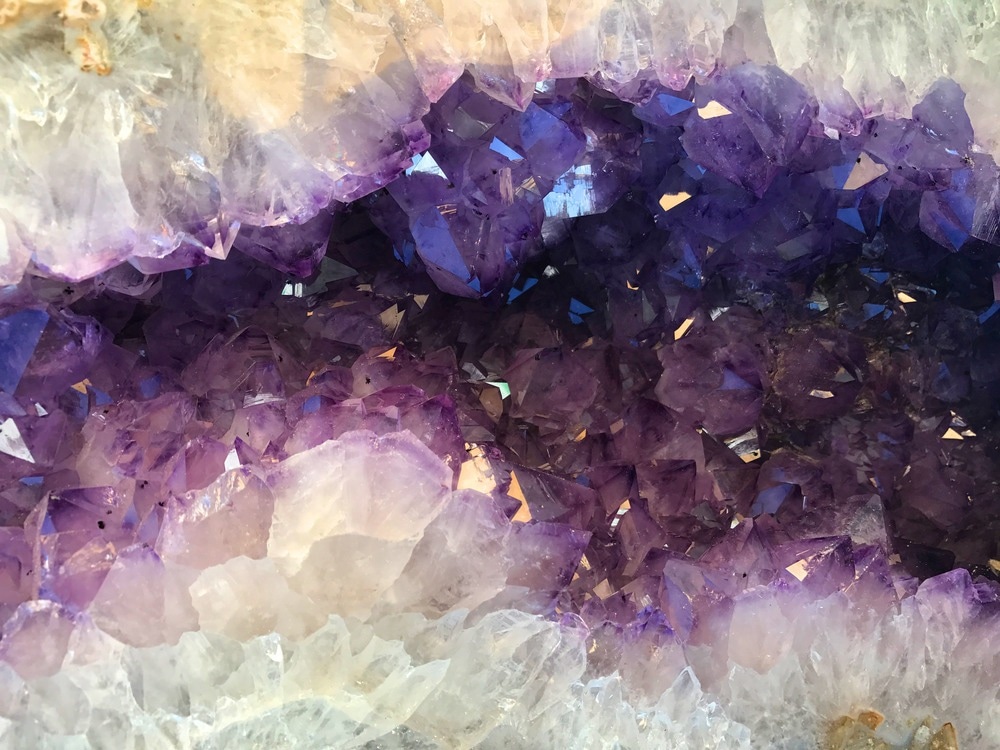In a recent article in Miner Deposita, researchers presented a comprehensive study of the amethyst and agate geodes in the Los Catalanes Gemmological District of Northern Uruguay. This region is renowned for its unique geological formations, attracting scientific interest and commercial exploitation. The research aims to examine the geological characteristics of these geodes, investigate the processes leading to their formation, and provide insights into the crystallization temperatures of the minerals within.

Image Credit: Erika Kirkpatrick/Shutterstock.com
Background
Geodes are hollow rock formations that often contain crystals or mineral matter, and they are formed through various geological processes, including volcanic activity, sedimentation, and hydrothermal systems.
The Los Catalanes district is particularly notable for its rich deposits of amethyst and agate, prized for their aesthetic qualities and widely used in jewelry and decorative items.
Previous studies have highlighted the significance of fluid inclusions in understanding mineral deposits' thermal and chemical history. Fluid inclusions are tiny pockets of liquid trapped within minerals during their formation, and they can provide valuable information about the conditions under which the minerals crystallize.
The study builds on this foundation by focusing on the specific characteristics of the geodes in the Los Catalanes district, including their mineral composition, formation processes, and the environmental conditions that influenced their development.
The Current Study
The research employed a multi-faceted approach to analyze the geodes, combining fieldwork with laboratory techniques.
Field sampling involved collecting geode specimens from various locations within the Los Catalanes district. These samples were then subjected to various analytical methods to determine their mineralogical and geochemical properties.
The study utilized cathodoluminescence microscopy to examine the internal structures of the geodes, allowing for the identification of different mineral phases and growth patterns. Fluid inclusion analysis was also conducted using nucleation-assisted microthermometry, which enabled the researchers to measure the temperatures at which the fluids within the inclusions homogenized.
This technique is particularly useful for understanding the thermal history of the geodes, as it provides insights into the conditions present during their formation.
The researchers also analyzed the chemical composition of the minerals using inductively coupled plasma optical emission spectrometry (ICP-OES), which allowed for the quantification of various cations and anions present in the samples.
Results and Discussion
The study revealed significant variations in the geodes' mineral composition and crystallization temperatures. The analysis indicated that the amethyst and agate geodes exhibited distinct mineralogical characteristics, with variations in the abundance of elements such as iron, manganese, and aluminum.
These differences were attributed to the varying geochemical conditions present during the formation of the geodes, including the composition of the fluids that filled the cavities and the temperature and pressure conditions at the time of crystallization.
The fluid inclusion studies provided critical insights into the geodes' thermal history. The researchers determined that the homogenization temperatures of the fluid inclusions ranged from approximately 50 to 120 degrees Celsius, suggesting that the geodes formed under relatively low-temperature conditions. This finding is consistent with the geological setting of the Los Catalanes district, where the presence of volcanic activity and hydrothermal systems likely influenced the temperature and composition of the fluids involved in the crystallization process.
The study also discussed the implications of these findings for understanding the broader geological context of the region. The variations in mineral composition and crystallization temperatures suggest that the geodes may have formed in response to fluctuating environmental conditions, including fluid chemistry and temperature changes.
This dynamic interplay between geological processes and mineral formation highlights the complexity of the geochemical systems at work in the Los Catalanes district.
Conclusion
The research provides valuable insights into the geological characteristics and formation processes of amethyst and agate geodes in the Los Catalanes Gemmological District.
The study has used advanced analytical techniques to elucidate these unique formations' mineralogical variations and thermal history. The findings underscore the importance of fluid inclusions in understanding the conditions under which the geodes crystallized, revealing a complex interplay of geological factors that influenced their development.
This research contributes to the scientific understanding of the Los Catalanes district and has implications for commercializing these mineral resources.
Future studies could build on these findings by exploring the broader geological context of the region and investigating the potential for discovering new geode deposits.
Overall, the study enhances the appreciation of the natural beauty and geological significance of Northern Uruguay's amethyst and agate geodes.
Source:
Arduin-Rode F., Sosa G., et al. (2024). World-class amethyst-agate geodes from Los Catalanes, Northern Uruguay: genetic implications from fluid inclusions and stable isotopes. Miner Deposita. DOI: 10.1007/s00126-024-01310-2, https://link.springer.com/article/10.1007/s00126-024-01310-2